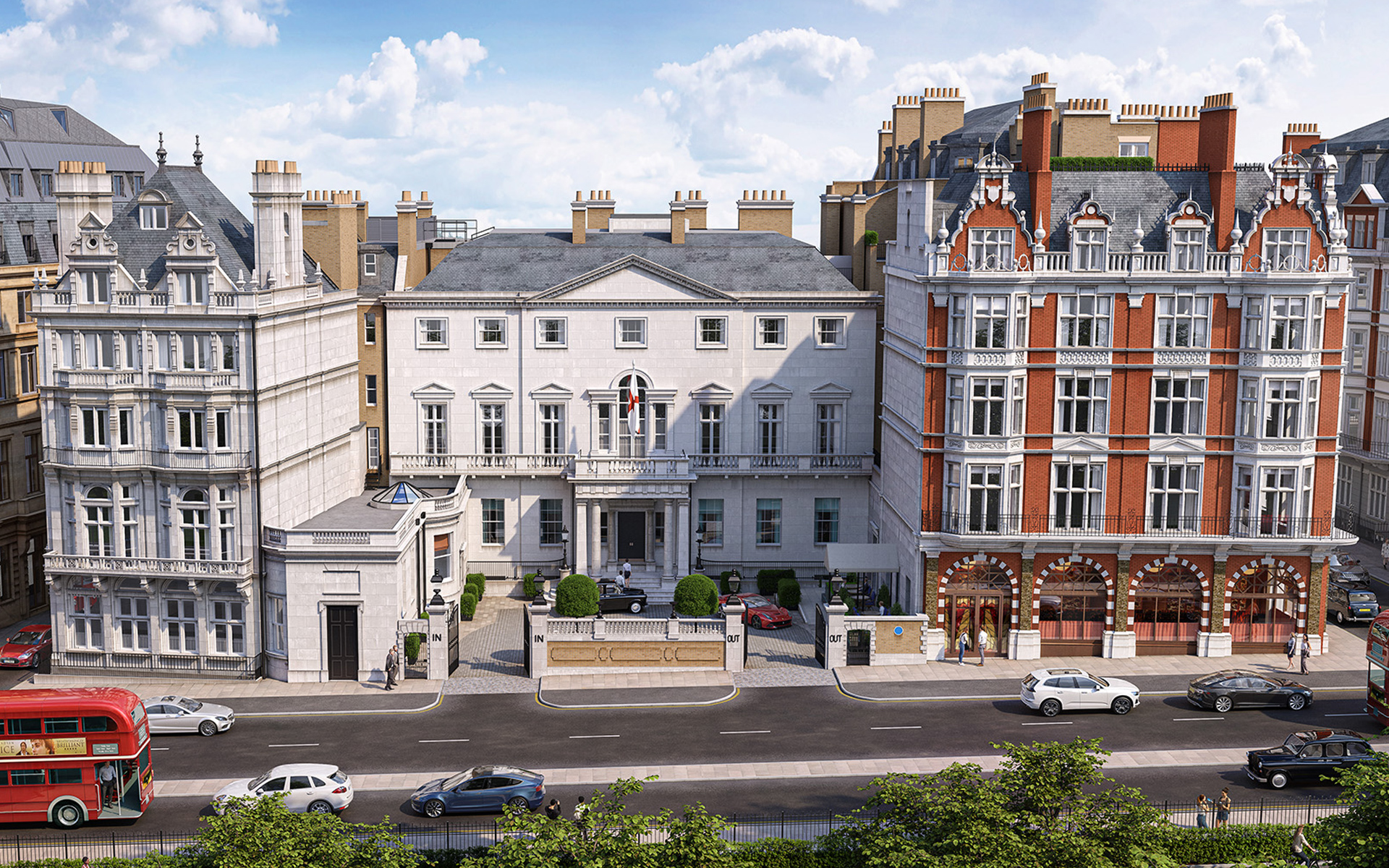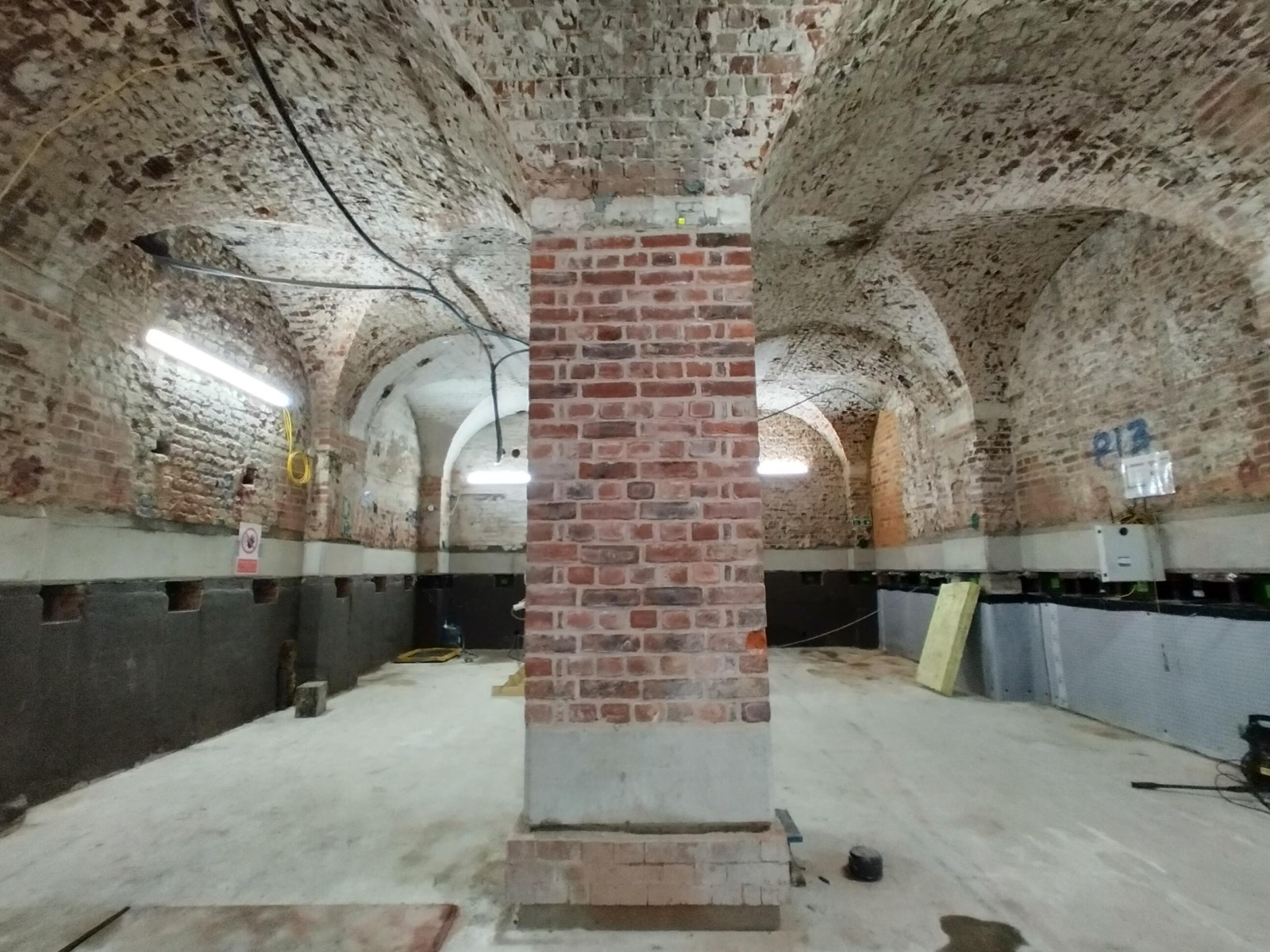Cambridge House.
Lifted above the noise.
In the heart of Mayfair, Cambridge House is a peaceful oasis thanks to cutting-edge vibration engineering. Our vibro-acoustics engineers worked in harmony with heritage conservation to support the creation a world-class luxury hotel and residence. Built between 1756 and 1761 and Grade I listed, we faced a unique challenge: how to preserve its architectural integrity and original features while mitigating the disruptive ground borne noise and vibrations from the nearby Piccadilly, Jubilee, and Victoria underground rail lines.

Cambridge House is an historic Palladian mansion with a portico and ballroom. Previously the Naval and Military Club, whose members included Lawrence of Arabia and Ian Fleming, it is now being developed into an inspiring hotel. We used innovative technical solutions to create a quiet, calm environment whilst sensitively protecting the original building. The engineering team was tasked with a seemingly impossible brief to isolate the 270-year-old structure from the incessant vibrations of the London underground tube network, while respecting the constraints imposed by heritage listing and the client’s requirements to create a luxury hotel.
The technical feat began with extensive vibration mapping conducted over several weeks. This was not just a diagnostic exercise but a predictive one, using detailed heat maps to identify critical noise and vibration hotspots throughout the building. This data-driven approach enabled the design team to understand how vibrations travelled through the historic fabric, pinpointing precise points to address.
 Cambridge House lifted and sat on elastometric bearings
Cambridge House lifted and sat on elastometric bearings
The solution we proposed was a pioneering full building isolation retrofit—a world first on this scale for a heritage building. We like to call it ‘the tablecloth trick’. Key to this approach was the careful slicing of the building’s substructure to insert elastomeric bearings—specialised vibration isolators designed to absorb and dampen vibrations through the ground. This process involved meticulously cutting through the centuries old load bearing elements without compromising the structural integrity or heritage fabric. The new bearings, provided by Mason UK Ltd, were then installed to separate the building from its foundations, effectively decoupling the structure from the vibrations and noise of the Underground trains. Conventional box-in-box acoustic rooms, which are commonly used in recording studios, cinemas and theatres, were not an option due to heritage sensitivities. Instead, our engineering design maintained the building’s aesthetic and historical values while delivering outstanding vibration control.
In this project we found detailed upfront analysis and interdisciplinary teamwork vital to help us deliver innovative engineering solutions. We enjoyed the challenge of working with an iconic heritage building in a busy urban environment. Our vibro-acoustic consultants collaborated with architects, structural engineers, contractors, and bearing specialists. The result is a luxurious environment where hotel guests and residents will be able to enjoy tranquillity and comfort, free from the disruptive low-frequency rumbles typical of central London’s underground rail network.